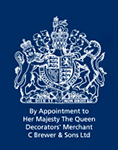Problem Solver - Plaster
Problem
The most common types of plaster mainly contain either gypsum, lime, or cement, but all work in a similar way. The plaster is manufactured as a dry powder and is mixed with water to form a stiff but workable paste immediately before it is applied to the surface. The reaction with water liberates heat through crystallization and the hydrated plaster then hardens.
Stages
Stage 1 - Preparation
Dry brush the surface down using a stiff bristle brush to remove any loose materials
If any mould or mildew is apparent, treat with a suitable fungicidal solution, rinse again with clean water and allow to dry.
Brewers recommends:
-
Albany Fungicidal Wash 1L
- A 1 litre concentrated multi surface treatment to prevent the growth of surface mould on timber and masonry
Depending on surface substrate check condition and carry out any remedial works required to make sound
Stage 2 - Basecoat
Once the surface is clean and all loose material has been removed, treat with a suitable primer and allow to dry.
Stage 3 - Topcoat
If new plaster, apply a breathable finish to manufacturers recommendations and allow to dry – 2 coats.
Brewers recommends:
-
Albany Supercover White 5L
- Fast drying, high opacity, matt finish for interior use on walls and ceilings
If painting dry plaster you can apply any wall finish followed by a 2nd coat.
Brewers recommends:
-
Albany Vinyl Matt Brilliant White 5L
- Durable, high obliteration, high opacity, matt finish, suitable for interior use on walls and ceilings

